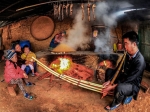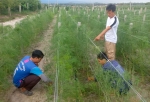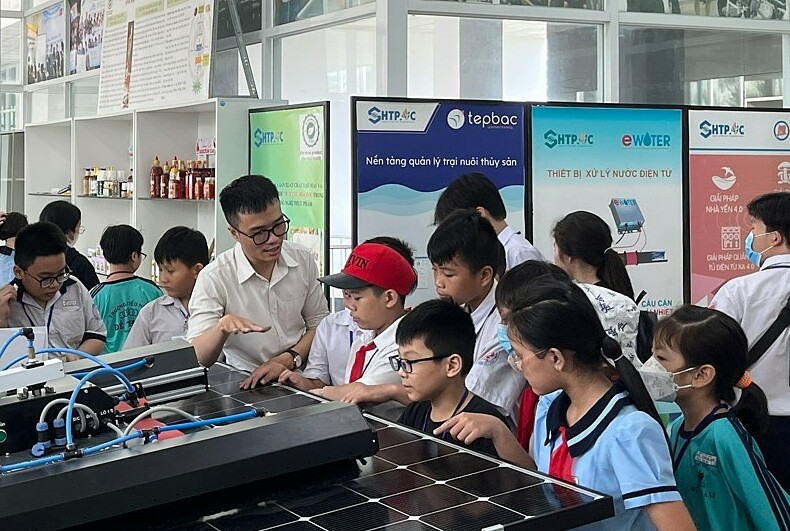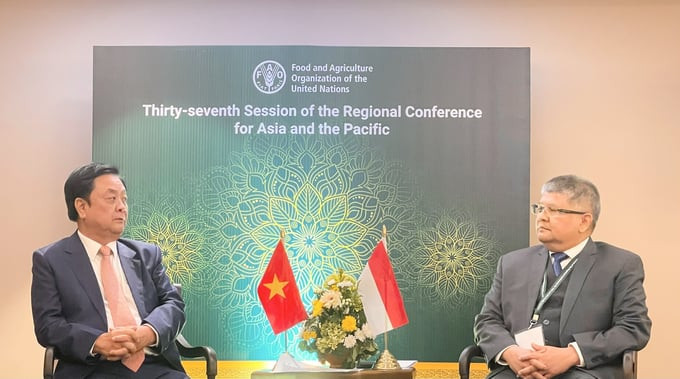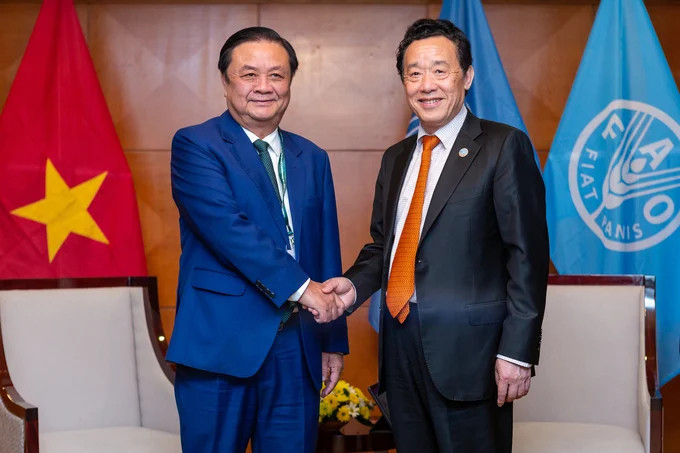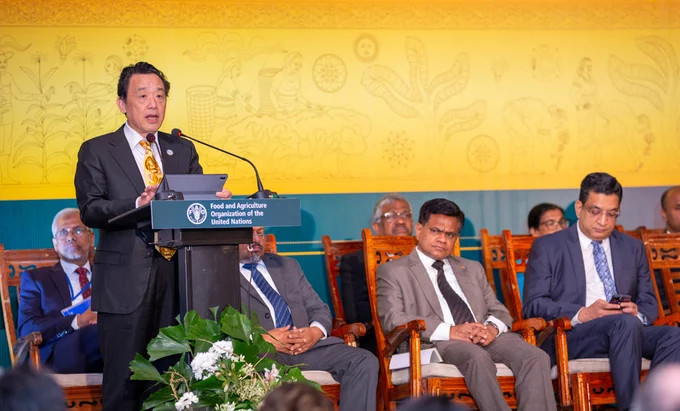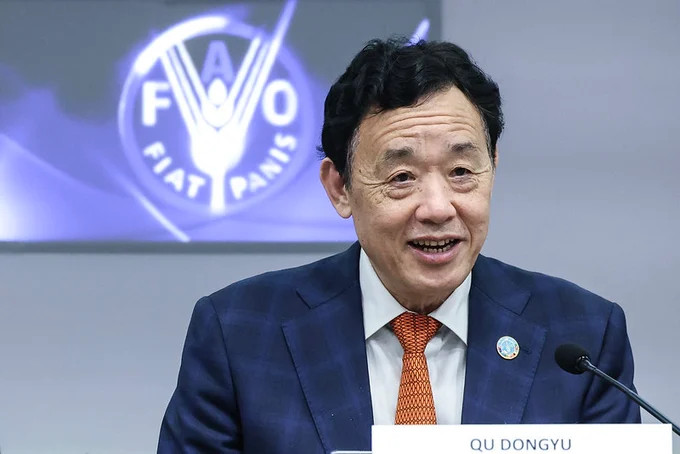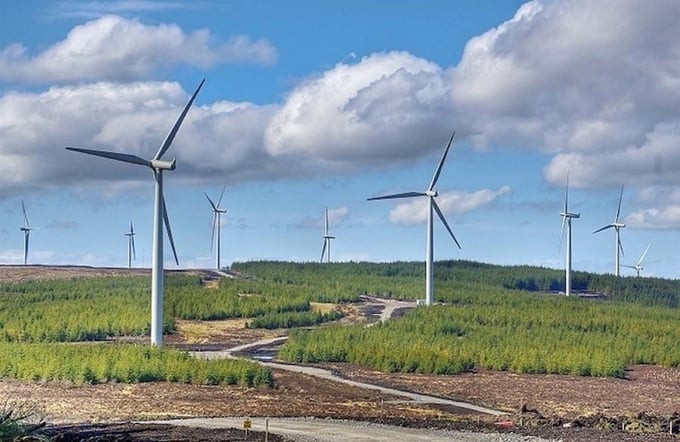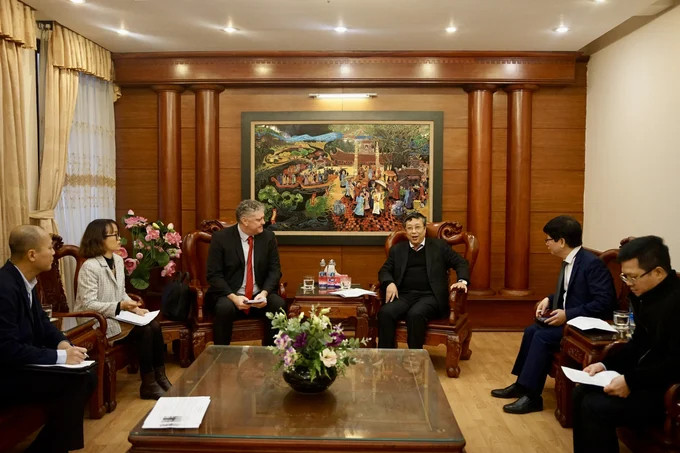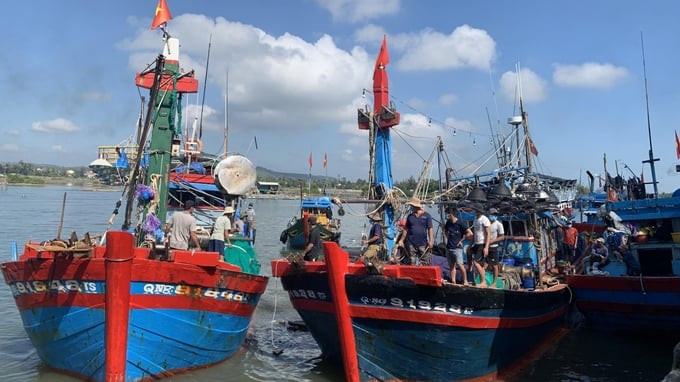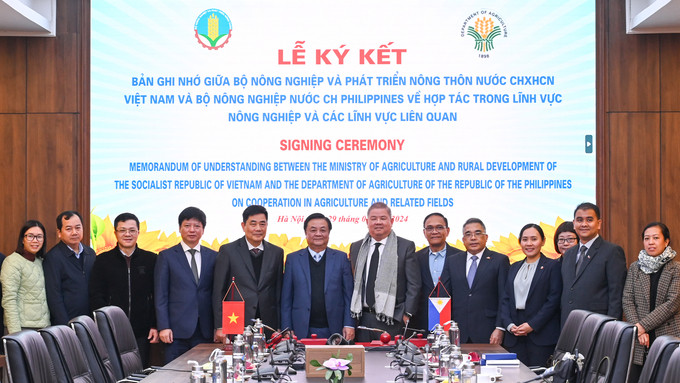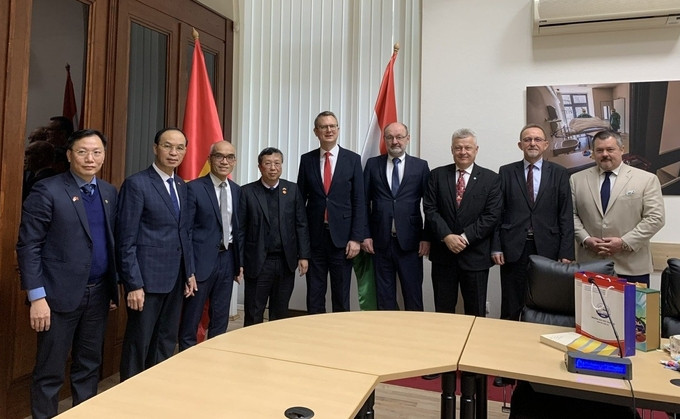Over the past 30 years, FDI into Vietnam has achieved many great achievements, but besides that, there are still many shortcomings. FDI inflows into the agricultural sector, especially high-tech agriculture, are still very modest compared to the national potential. The article aims to generalize the situation of attracting FDI in the field of agriculture, high-tech agriculture in recent years. At the same time, it points out the difficulties and limitations that still exist in reality to come up with solutions to increase FDI attraction in the hi-tech agriculture sector in the coming time.
The explosion of information technology, along with the shrinking land area due to urbanization, climate change, the competitiveness of the quality of agricultural - forestry - fishery products is increasingly fierce, the food problem " "dirty" is becoming a burning problem in society.
Those are great challenges and pressures for Vietnam's agriculture. If the production is fragmented, the structure of crops and livestock is not renewed, and high-tech agriculture is not developed, our country's agriculture will not grow but will also lag further behind the region and the world. .
The reality of hi-tech agriculture and the problem of attracting FDI in high-tech agriculture
Current status of high-tech agricultural development in Vietnam
- The development of high-tech agricultural zones:
Along with the development of economy and science, the financial capacity is better, the awareness of high-tech agriculture increases; especially in the context of serious warnings about food safety increasing, investment in hi-tech agriculture really becomes a matter of concern.
Currently, the country has 29 hi-tech agricultural zones planned in 12 provinces and cities, of which 7 have been put into operation.
Typical examples include Thai Nguyen Hi-tech Agricultural Park, Pho Yen and Phu Binh Thai Nguyen districts with an area of 300 hectares; Lam Dong Hi-tech Agricultural Park; Lac Duong district, Lam Dong province with an area of 221 ha; Phu Yen hi-tech agricultural zone, Phu Hoa district, Phu Yen province with an area of 460 ha; Lao Cai hi-tech agricultural zone (Sapa district, Lao Cai province) with an area of 200 ha.
The main fields are cultivation, animal husbandry and fisheries; preservation and processing of agricultural products. Currently, the number of hi-tech agricultural enterprises is 35 hi-tech agricultural enterprises.
Agricultural production has applied modern technologies instead of traditional methods. Such as the application of cloud computing technology in crop care and management; using modern technology to operate and manage livestock farms; cloud data management in shrimp production and processing.
Typically: TH dairy farm. Currently, TH Dairy Farm in Nghe An has more than 45,000 cows and uses modern technology to operate and manage the farm; Minh Phu Group has used “cloud” data for shrimp production and processing; Greenhouse flower growing model in Lam Dong…
According to the 2017 report summarizing the work of the Ministry of Science and Technology (Science and Technology), Science and Technology contributed over 30% of added value in agricultural production and 38% of added value in agricultural production. increase in the production of plant varieties and livestock. Over 90% of the rice area, 80% of the corn area, 60% of the sugarcane area, and 100% of the newly planted cashew area, using Vietnamese varieties.
The productivity of some livestock and crops is high compared to other countries in the region and the world: Rice ranks first in ASEAN; Pangasius, pepper leading the world; coffee, rubber ranked second in the world... The rate of mechanization of agricultural production was also promoted. The number of agricultural production machinery and equipment increased by 1.5% - 2% compared to 2016.
- Investment capital to develop hi-tech agriculture:
Investment capital to develop hi-tech agriculture comes from: individuals, domestic enterprises and foreign investment capital (mainly FDI) and a part of preferential support from the Government. Specifically:
+ Capital from domestic individuals and private enterprises:
Large enterprises have and announced that they will invest in agriculture such as Vingroup, TH True Milk, Hoa Phat, Truong Hai Auto, FPT, Elcom Company, Vinaseed, Thaco, Lam Son Sugar, ... and the latest is Mobile World Joint Stock Company invests in Bach Hoa Xanh system. Notably, Vingroup with the Vineco brand has deployed a partnership model with 1,000 cooperatives and farmer households since 2016.
Hoang Anh Gia Lai plans to spend 20,000 hectares of fruit trees by 2018 with over 100,000 beef cows and 20,000 dairy cows. PAN Group has exported agricultural products to more than 20 countries around the world and is continuing to invest more than 2,000 billion VND in agriculture through M&A deals.
NutiFood also invested more than 1,000 billion VND in 2017 to develop coffee in Dak Lak. Loc Troi company with agricultural value chain from plant varieties, pesticides, organic nutritional products, rice products, packaging creates a closed life cycle for products.
Recently, Loc Troi signed an investment agreement of VND 7,800 billion to operate a closed chain on a land area of 2,000 hectares in Thai Binh. Besides corporations and large enterprises, small and medium-sized enterprises have also been investing in high-tech agriculture.
However, according to the survey data of the Vietnam Chamber of Commerce and Industry, in 2017, the whole country had 1% of the total number of agricultural and investment enterprises with the capital accounting for only about 3% of the total investment capital of Vietnam. business community into production and business.
+ Capital from abroad:
The trend of globalization and international economic integration is to help accelerate capital flows in the world, especially FDI inflows. With advantages in capital, science and technology as well as experience and management level, FDI inflows are expected to help more developed economies, especially in developing countries.
In our country, FDI inflows have made strong changes in the economy. However, the reality shows that FDI inflows into the agricultural sector in our country are still very limited.
According to the Foreign Investment Agency (Ministry of Planning and Investment), as of February 2018, the total foreign direct investment (FDI) in agriculture was 3.5 million USD with 514 projects. Compared to the total accumulated investment capital in the agricultural sector, this capital only accounts for about 1%. This capital mainly comes from Japan.
- Policies to promote investment in agricultural development and hi-tech agriculture:
+ Credit support policy
Resolution No. 30/2017/NQ - CP of the Government dated March 7, 2017, directing the Prime Minister on a credit package of VND 100,000 billion from the capital mobilized by commercial banks for development loans. hi-tech agriculture, clean agriculture with appropriate interest rates, 0.5 - 1.5% lower than market interest rates.
With this support, individuals and businesses producing high-tech agriculture will enjoy incentives to facilitate the development of high-tech agriculture.
+ Policy on land
The Government is expected to amend the Land Law 2013 as proposed by localities, requiring land use planning in localities in the direction of expanding land tenure, planning conditions to support the development of high-tech agriculture. such as irrigation water, canals, infrastructure support..., reducing cumbersome procedures.
+ Policy to encourage agricultural development
The Government promulgates Decree No. 57/2018/ND-CP on mechanisms and policies to encourage enterprises to invest in agriculture and rural areas. According to Decree No.57/2018/ND-CP of the Government, enterprises investing in agriculture and rural areas will enjoy many incentive mechanisms and policies of the State.
According to regulations, enterprises subject to incentives will be given incentives and support through the exemption and reduction of land use fees, reduction of land rents and water surface rents of the State; support for land concentration, access to credit support; support research and transfer of high-tech agricultural applications; support human resource training, market development, grassroots investment support.
The Government issued Resolution No. 35/NQ-CP dated May 16, 2016 on supporting and developing businesses until 2020. Resolution No. 19/2018-NQ-CP dated May 15, 2018 on the continuation carry out the main tasks and solutions to improve the business environment and enhance national competitiveness in 2018 and the following years.
In the spirit of the Resolution: Implement activities to contribute to administrative reform and create favorable conditions for enterprises; Creating a favorable environment to support start-ups and innovative enterprises; Ensuring business rights, equal access to resources and business opportunities of enterprises; Reduce business costs for businesses and protect their legitimate rights and interests.
Implement trade and investment promotion activities and support programs and projects to improve the competitiveness of enterprises and business associations.
The situation of attracting FDI into the agricultural sector
In 2017, foreign investors poured capital into 19 industries, in which the processing and manufacturing industry was the field that attracted a lot of attention from foreign investors with USD 15.87 billion; accounting for 44.2% of total registered capital.
Electricity production and distribution ranked second with 8.37 billion USD; accounting for 23.3% of total registered investment capital. Third is the real estate business with 3.05 billion USD; accounting for 8.5% of total registered capital. Agriculture, forestry and fishery ranked 13th with $0.163 billion, accounting for 0.49%.
According to partners, there are 115 countries and territories having investment projects in Vietnam, of which Japan ranks first with a total investment capital of 9.11 billion USD, accounting for 25.4% of total investment capital; Korea ranked second with a total registered capital of 8.49 billion USD, accounting for 23.7% of total investment capital in Vietnam; Singapore ranked third with a total registered capital of 5.3 billion USD, accounting for 14.8% of total investment capital.
The structure of FDI in the field of agriculture, forestry and fishery by sector is unevenly distributed, FDI projects mainly focus on a number of areas such as wood and forest product processing, animal husbandry and animal feed processing. In recent years, investors have begun to shift their investment to the field of cultivation and processing of agro-forestry-fishery products.
Projects on processing agricultural products and food are taking the lead in attracting FDI in agriculture, followed by projects on afforestation and forest product processing, animal feed production and cultivation.
Structure of FDI in the field of agriculture, forestry and fishery by locality: Foreign direct investment projects in the field of agriculture, forestry and fishery are mainly located in the South.
More than half of the projects are concentrated in the Southern Delta, followed by the Mekong River Delta and the South Central Coast. In the North and Central regions, currently, FDI attraction in this field is very limited.
Structure of FDI in the field of agriculture, forestry and fishery by investment partners: Up to this point, there have been more than 50 countries and territories investing in the field of agriculture, forestry and fishery in our country.
The leading countries are: Korea, Japan, Taiwan, Hong Kong, Malaysia. Japan is a big investor in this field, so far, there have been successful projects in the application of Japanese science and technology to agriculture in Vietnam.
Fujctusu Information Technology Company signed a cooperation agreement to deploy Akisai cloud service to support agricultural management of Vietnam 2015-2016. February 2015 ISE Food went to Ho Chi Minh to transfer livestock and introduce Vietnamese egg production and processing technology.
At the same time, Japan is also implementing a number of projects to grow clean flowers and vegetables in Lam Dong. Some foreign partners, who have real strengths in applying high science and technology in agriculture, such as the United States and Australia, are still hesitant to invest FDI in Vietnam in this field.
The situation of attracting FDI in the field of high-tech agriculture
High-tech FDI for the agricultural sector accounts for an extremely low proportion of total FDI, accounting for about 18% of FDI in the agricultural sector. The policy to attract FDI has not really directed this capital flow into the agricultural sector.

High-tech FDI projects for the agricultural sector mainly focus on a number of industries: floriculture, vegetables, agricultural product processing. In other industries, there have not been many high-tech projects, such as research and production of plant varieties, production of veterinary drugs, and production of organic plant protection drugs.
FDI projects for high-tech agriculture have only been concentrated in a few regions with advantages. For example, the leading province is Lam Dong province with many high-tech agricultural enterprises and projects. Lam Dong is the leading locality in the country attracting Japanese investors in the field of high-tech agriculture.
Ha Nam is an emerging province in the North in terms of FDI attraction for hi-tech agriculture with 11 investors, total capital of over 33 million USD.
In Hanoi and Ho Chi Minh City, there have been smart agricultural production projects and high-tech agricultural development.

Investors in high-tech agriculture are still limited, mainly from Japan. Among FDI investment partners in Vietnam, Japan is the country with the largest investment level and the most in the field of agriculture and high-tech application agriculture.
By the end of 2017, Japanese investors had invested in Vietnam 3,599 FDI projects with a total registered capital of 49.46 billion USD, ranking 2nd among investment partners in Vietnam, after South Korea. .
In 2017 alone, Japan was the leading country among 115 countries and territories investing in Vietnam, with a total registered capital of more than 9 billion USD, accounting for 25% of total FDI invested in Vietnam. There are about 20 Japanese enterprises investing in high-tech agriculture in Vietnam, of which more than 10 are investing in Lam Dong province.
Many Japanese enterprises have sought investment opportunities in agriculture such as: High-tech agricultural vegetable model in Lam Dong; Link to export Cat Chu mango in Dong Thap to Japan; Find investment opportunities in public agricultural projects in Vinh Phuc, develop tuna fishing and processing in Binh Dinh, or develop agricultural products in the Mekong Delta.
The high potential for agricultural development in Vietnam will attract more interest and bold investment from Japanese investors in the coming time.
Limitations in attracting FDI in hi-tech agriculture
- Preferential policies in the agricultural sector such as infrastructure support and human resource development are only applied to domestic small and medium-sized enterprises, not to FDI enterprises, so investors investment is limited.
- Low starting point, scientific research level, facilities and equipment for research and testing are still low and simple.
- The scale of farmland is small and fragmented, without a large area. This situation leads to difficulties for the application of mechanization and synchronous science and technology.
- Human factors have not met the requirements of investors. The problems of technology operation level, labor discipline as well as professionalism in production are not high.
Administrative procedures are still cumbersome and complicated, and it is difficult to connect farmers with businesses.
Solutions to attract FDI into high-tech agriculture in Vietnam in the coming time
Firstly, on the issue of accumulation and concentration of land in agricultural production.
If, capital and access to capital to develop hi-tech agriculture are the most difficult problems faced by domestic small and medium enterprises operating in this field, then for foreign investors The most important issue is land accumulation and land fund for the development of hi-tech agriculture.
Applying high technology needs to be associated with a large enough scale, but with the current regulations on land allocation quotas, the agricultural land production area is still sporadic and fragmented. The annual land allocation quota for crops is limited to 3 hectares for the Southeast region and the Mekong Delta, and 2 hectares for other provinces.
The limit for receiving land use rights is 10 times higher than the land allocation limit. This causes great obstacles in the process of land concentration and accumulation. At the same time, the implementation process encountered many difficulties from people in terms of procedures, finance and mobilizing farmers to transfer land use rights to projects and businesses. So we need:
- Go to abolish or expand the quota of land allocation, the limit of receiving land use rights in agriculture, creating conditions to encourage large enterprises, FDI enterprises to have "clean land" in applied agricultural production. high technology.
- In the process of implementing land accumulation and concentration, local authorities need to make efforts and actively promote their role to mobilize farmers to see efficiency and actively cooperate. At the same time, the local government acts as a bridge between farmers and businesses, ensuring the rights and interests of the parties in the process of land accumulation and concentration.
Second, support policies with great incentives for investors in agriculture.
To attract FDI, Vietnam is implementing a lot of support policies and great incentives such as: 20% preferential land rent for the first 5 years in basic construction, preferential tax rates like coffee exporters. Coffee is exempt from export VAT, tax exemption and reduction for a limited time (up to 9 years), allows loss transfer within 5 years, exempt from tax on profit transfer abroad, tax refund on reinvested profits.
These incentives aim to increase attractiveness to attract foreign investors. However, when Vietnam joins the WTO, subsidies in agriculture will need to be reduced and eliminated to match the commitments.
With the field of agricultural production applying science and technology, it seems that the above incentives are not enough, because the field of high-tech agricultural production has great potential risks. Therefore, besides the policy on accumulation and concentration of clean land fund, the State should consider:
- Making the most of WTO-approved measures to increase FDI attraction in the Agriculture sector: Increasing subsidies for people to invest in developing domestic materials by giving preferential loans (green light subsidies). );
Promote scientific research activities, R&D research and development fields;
- Invest in hi-tech agricultural projects, research and development projects, and advanced and modern technologies. Prioritize the selection of FDI projects in high-tech, environmentally friendly and sustainable agriculture.
Third, measures to minimize investment risks in agriculture.
Investment in the agricultural sector has huge potential risks, while investment guarantees for investors in our country are still limited. So:
- It is necessary to promote international cooperation, join international institutions on investment, ensure investment, sign bilateral and multilateral investment protection agreements, in order to create confidence for investors in the field of investment. this area.
- Improve and strengthen the implementation of intellectual property rights and copyright protection. We need policies to protect copyright and intellectual property rights, especially in the agricultural sector. This helps FDI investors as well as domestic investors have a basis for development and healthy competition.
Fourth, building a value chain for agriculture focusing on the position and role of farmers.
Building a value chain for agriculture is an essential issue in the development of high-tech agriculture, especially the output market factor for agricultural products. To build an efficient agricultural value chain, it is necessary to:
- Focusing on market issues and developing markets for agricultural products with accompanying support measures;
- In the value chain for agriculture, it is necessary to pay great attention to the position and role of farmers.
Because the labor force in the agricultural sector of Vietnam is very large, where will the farmer stand in the agricultural value chain, farmers understand and change their thinking about how agriculture can develop. sustainable agriculture.
In addition, there should be policies to support farmers in the process of developing high-tech agriculture. When technology reduces costs and labor, the problem of labor surplus in agriculture needs to be resolved. handle.
Therefore, it is necessary to pay attention to the issue of improving the quality of farmers' labor so that they can respond appropriately to high-tech agriculture, as well as other industries when changing agricultural production methods.
Fifth, promotion activities to attract FDI and build infrastructure in the agricultural sector.
Investment promotion activities to attract FDI should be promoted in the agricultural sector
- Strengthen investment promotion conferences in the field of attracting FDI into high-tech agriculture.
- Survey and learn from the experiences of countries in the field of high-tech agriculture, especially those in ASEAN.
- Promote public-private partnerships (PPPs) in the agricultural sector to increase added value in agricultural products.
In addition, the problem of completing basic infrastructure in agriculture and rural areas needs to continue to be implemented and improved: the transportation system, the grid system, the information technology system, the irrigation system . Building infrastructure will create favorable conditions for agricultural development as well as increase attractiveness to foreign investors.
References:
1. “Solution to attract Japanese direct investment (FDI) into Vietnamese agriculture, http://lyluanchinhtri.vn
2. “Restructuring agriculture to attract FDI, Restructuring agriculture to attract FDI”,
http://vukehoach.mard.gov.vn
3. “Focus on attracting FDI in high-tech sector”, http://www.iavietnam.net
4. “Attracting FDI projects towards high technology, http://baotintuc.vn
5. “Attracting people and businesses to invest in hi-tech agriculture”, http://vtv.vn
6. “Accumulating land and developing CNC agriculture: Some concerns”, http://tiasang.com.vn
7. “The situation of attracting foreign investment in 12 months of 2017”
http://fia.mpi.gov.vn




